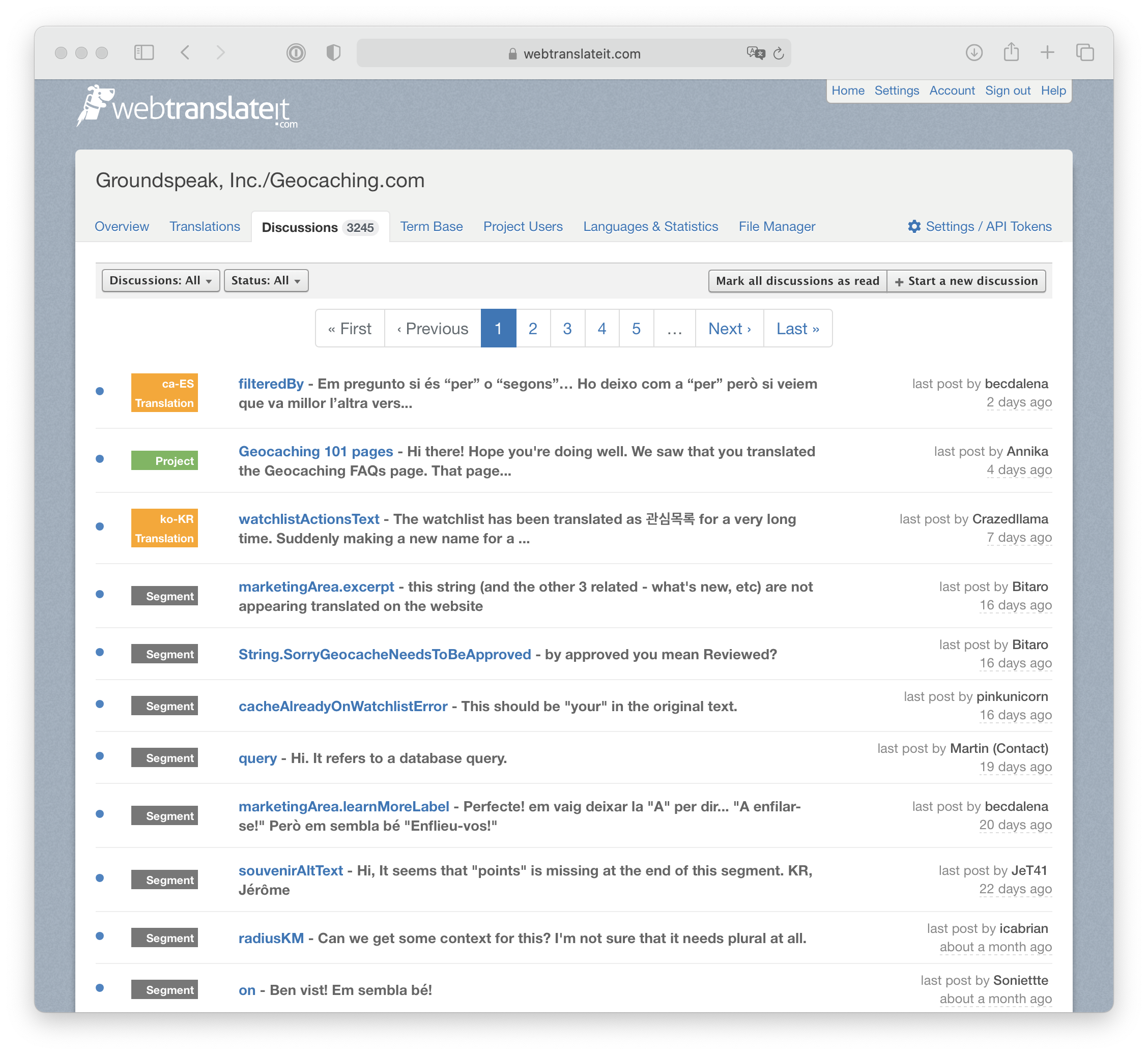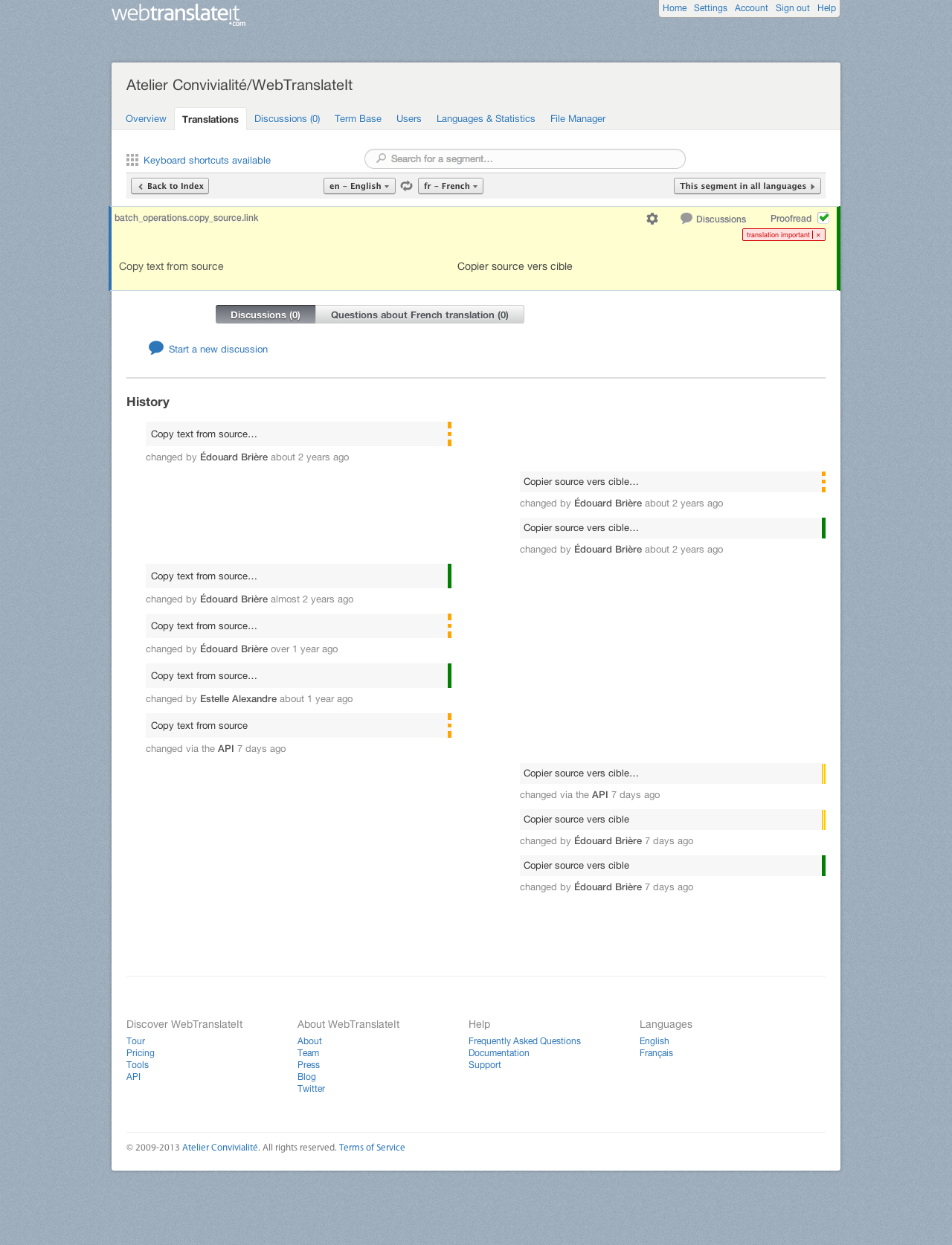Discover our translation tools
Tools tailor made to translate your software, app or website
Also, check our management tools and our development tools.

The Translation Interface
See how your project is going in real time. It’s easy to see which languages are done and which language still need some work.
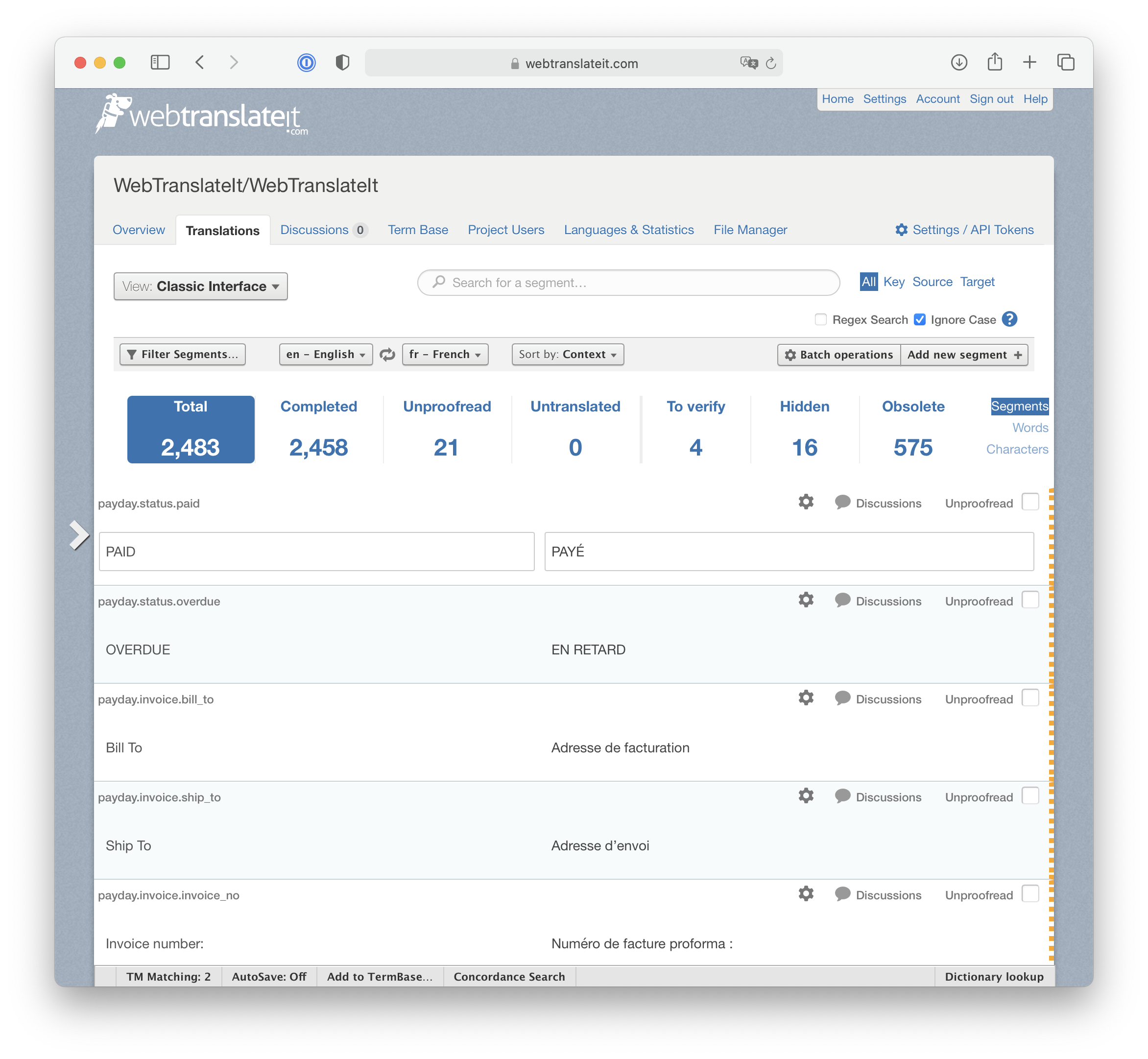
Features:
- Search Engine — Search your segments by key, source text, target text or by regular expression.
- Statuses — Segments have statuses: untranslated, unproofread, to verify, proofread, obsolete and hidden. Filter segments by statuses to get your work done.
- Statistics — We generate statistics of your project for you, by number of segments, words and characters, so you can see at a glance what needs needs to be done.
- Filters — Filter your segments by date, file, status, label, category, type of segment or by the last person who translated a segment. Combine them together to create your ultimate filter.
Translation Memory
WebTranslateIt includes a Translation Memory. This system is fed from 2 different sources:
- If your project is already partially translated, WebTranslateIt creates a translation memory for your own project, which is great to keep your translations consistent.
- Some suggestions come from our global translation memory. The global translation memory is a large translation memory made of more than eleven million translations.
You can also configure suggestions from machine translation services, such as Google Translate or Bing Translator.
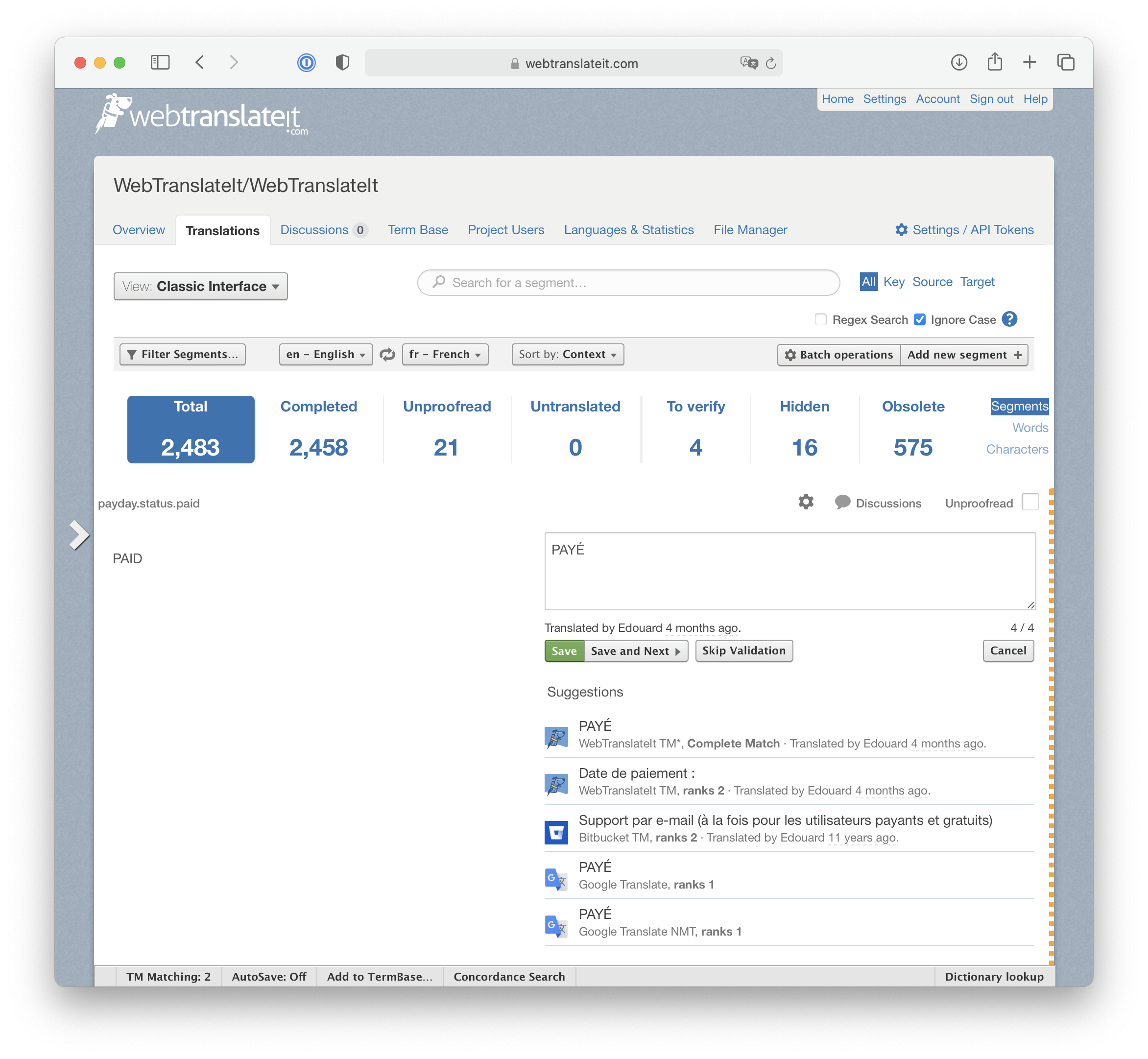
Terminology Database
Copy consistency increases software quality. Every project on WebTranslateIt integrates a terminology database. The terminology database (or term base) is a glossary in which you can list your project’s vocabulary, decide of translations, and definition.
It is useful to keep your translations consistent throughout your project. For example, is it “sign in”, “sign-in”, “signin”, “log in”, “come in”, “login”? The term base helps you decide of which term you want to use and stick to it.
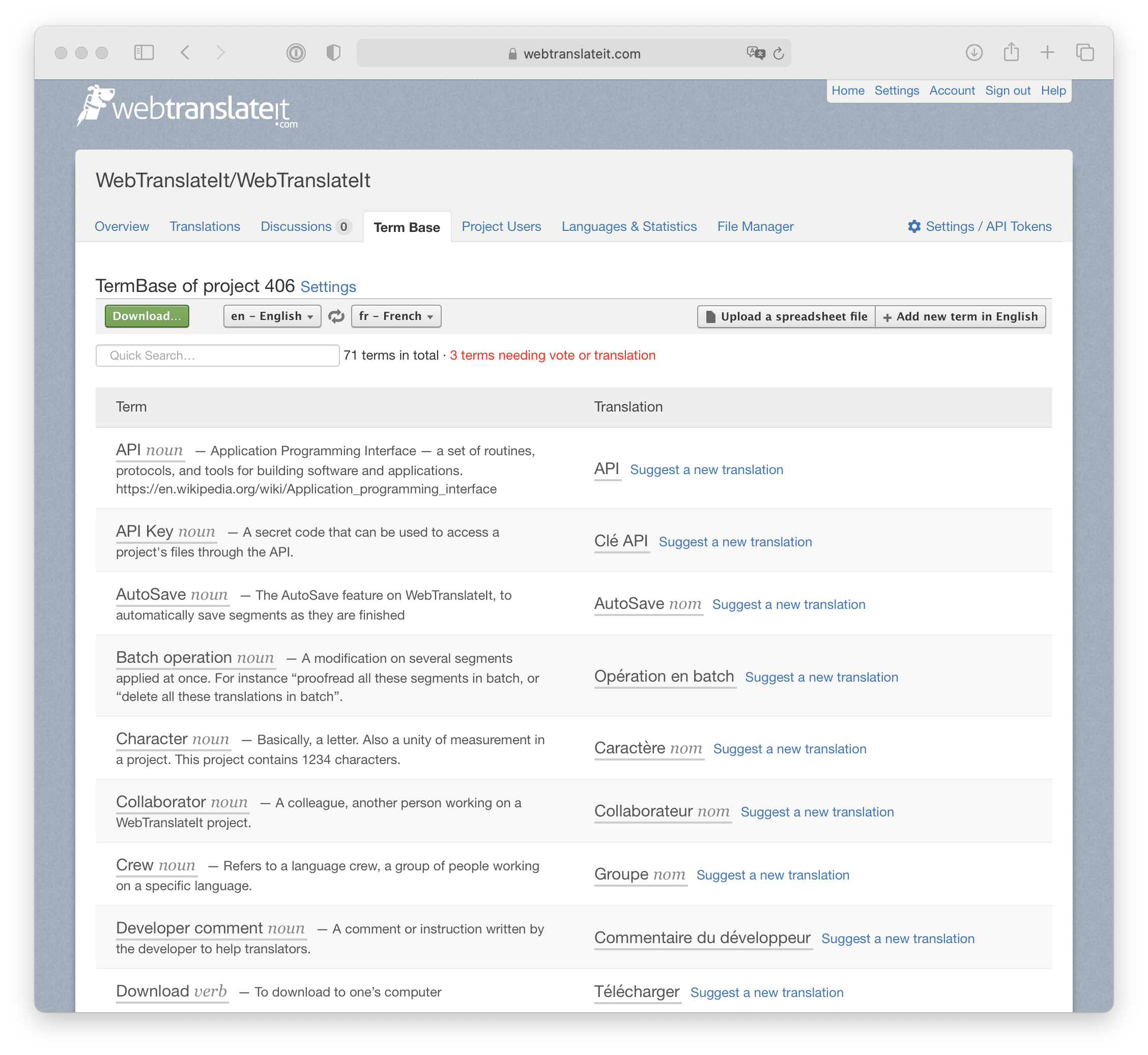
Segment History
Every time a segment is edited, we keep a history of the changes. The history page allows you to see everything that happened to a segment and this feature is incredibly useful to fix mistakes and to understand how to translate a segment again if the source text has changed.
Know exactly who made what, and when. This feature is really unique and doesn’t exist on any other translation tool.
Bi-directional scripts support
The translation interface support advanced features such as left-to-right, right-to-left and bi-directional scripts. For example, if you translate text into Arabic, the translation interface will automatically display the text from the right to the left.
But what if you have English words in your Arabic text, such as brand names? Well, the Arabic text will be typed from the right to the left, whereas the English text will be typed from the left to the right.
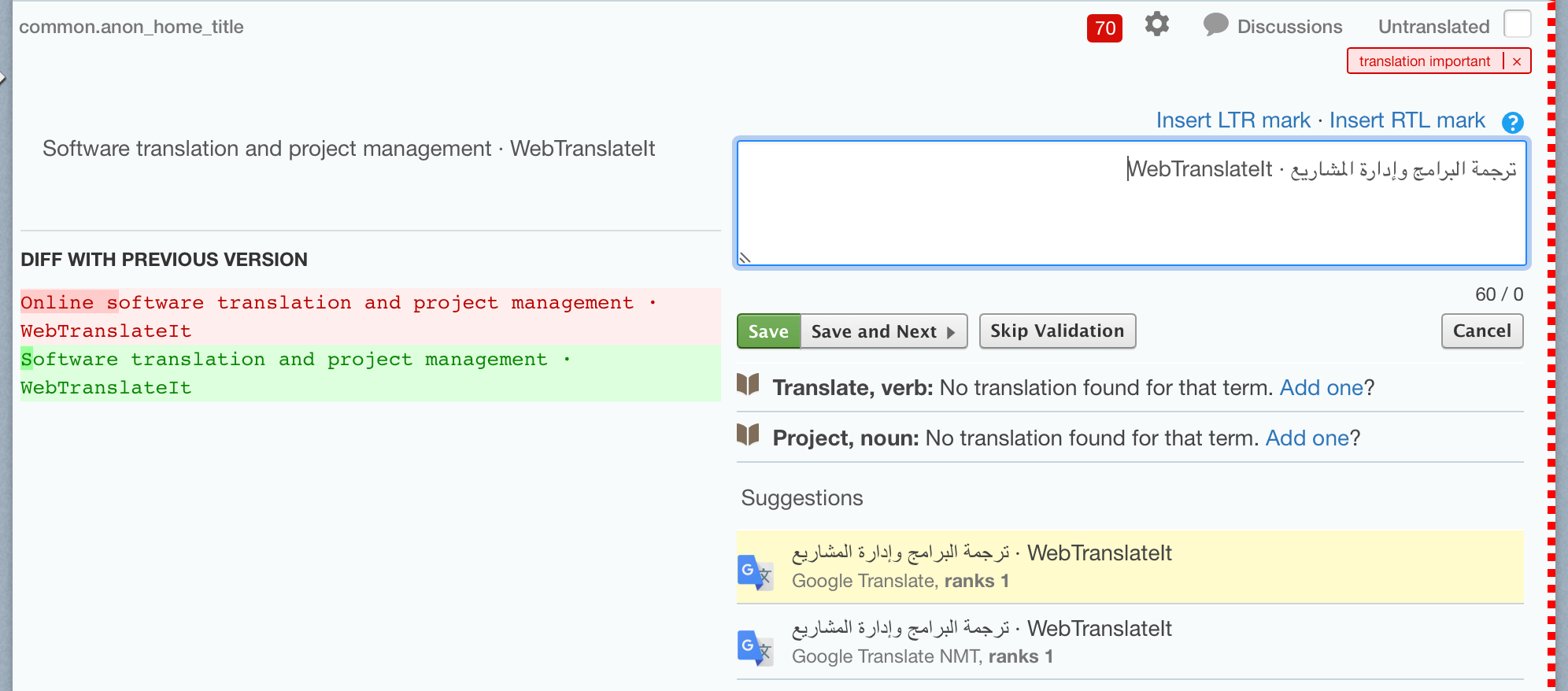
Plural forms support
Some language file formats interpolate variables in the segments. When the variable is a number, translations must be made according to that number’s plurality. Plural rules are different from one language to another, so it can become very complicated.
For example, English only has 2 plural forms, but Russian and Polish have 4. Chinese doesn’t have any plural forms, but Arabic has 6! WebTranslateIt knows about plural forms of all languages, and you can customise plural rules to you needs too. It helps translators translate plural segments very easily.
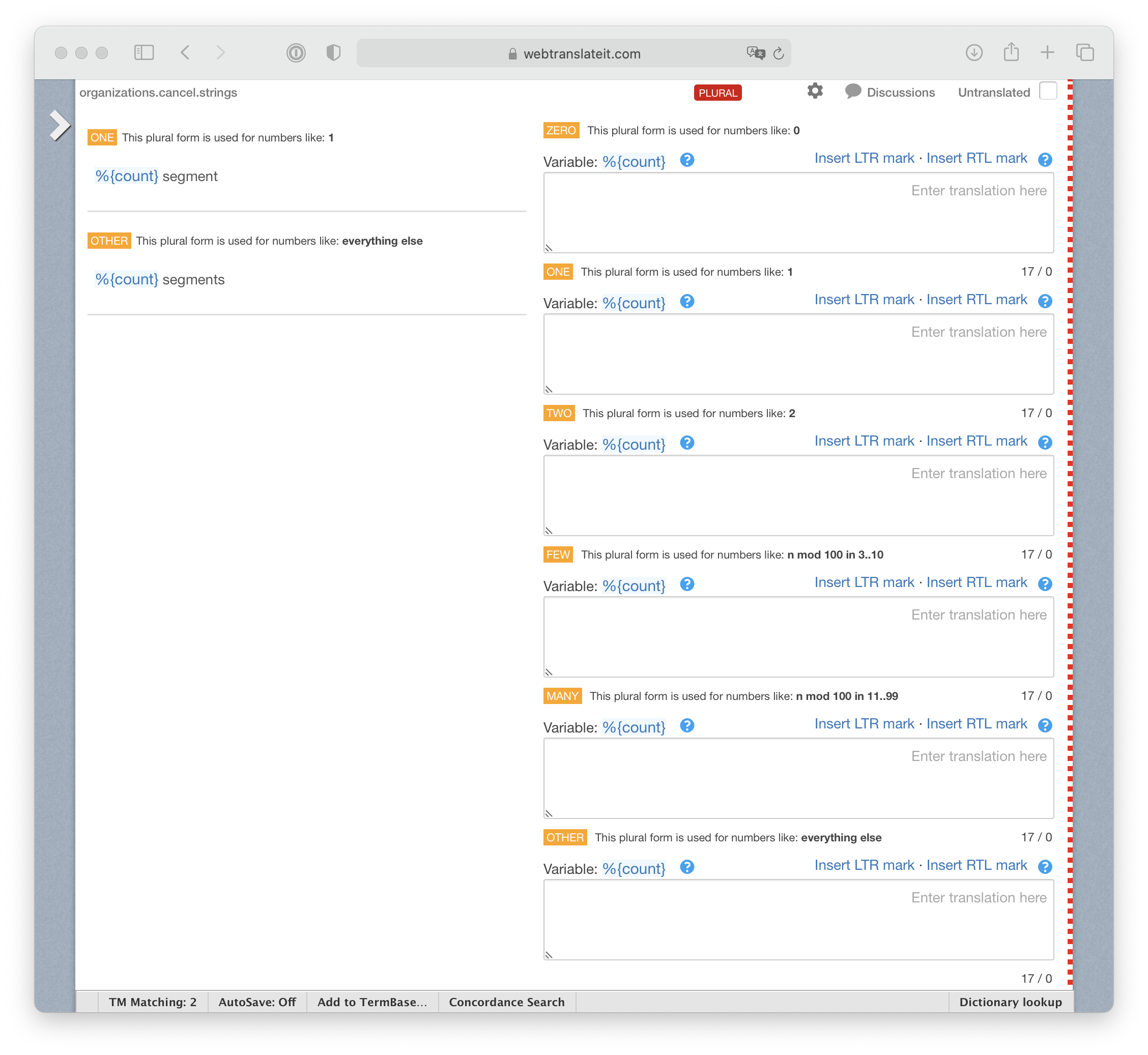
Discussions
Discussions are a great way to communicate or ask questions on a translation project. All the discussions happen in one place, and you can easily check unread discussions.
